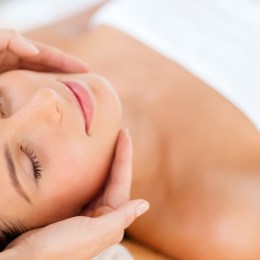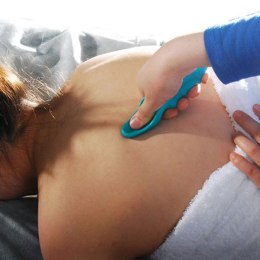Crafting bespoke treatments for optimal results.
Pushing for results in aesthetics can seem daunting, although needed for troubling skin conditions for numerous reasons. Results may plateau, some skins may be more robust than others, but is there a formula to achieving results clients dream of?

A new wave of combining modalities within a single treatment is now quite common amongst skin clinics, and one particular clinician who practices this frequently is Michaela Buswell, a seasoned Dermal Clinician and student RN renowned for her adept integration of modalities at Klinika, with the support of Dr. Nik Davies.
We find out exactly how modalities can be layered or combined to achieve optimal results.
Tell us what modalities you often work with on daily basis.
Within my career, I’ve been lucky enough to work in clinics abundant with varying modalities, enabling me to test many things on myself and patients that are “off label” so to speak.
A variety of energy-based devices like Excel V+, Enlighten III, Enlighten SR, Venus Viva RFMN and HIFU alongside more traditionally seen treatments like Neopen, Hydrafacial, TCA’s and other combination acid peels are among them.
Can you give us some examples of combination treatments that you perform? What concerns does it address and what downtime is involved?
The demographic that Klinika often sees is more concerned with reversing signs of aging and sun damage accumulated in previous years without experiencing a lot of downtime. A favourite combination at the clinic currently is a triple-layered treatment consisting of Laser Genesis, Pico FX, and a 12% TCA peel. This treatment is effective for age management as it reduces pigmentation, thickens the dermis, and unifies the texture of the epidermis.

Laser Genesis increases dermal temperature, which increases not only cellular metabolism but also blood flow to the skin, resulting in increased availability of the release of inflammatory mediators upon injury. Pico FX then causes slight epidermal disruption with the fractionated beam in combination with a large dermal injury. This results from light-induced optical breakdown (LIOB), which generates high-density plasma with very quick, high-energy pulses. The remaining energy from the laser pulse is absorbed by the plasma, rapidly expanding it into a kind of gas bubble, creating localised dermal trauma, resulting in a thickening of the dermis through collagen and elastin cellular stimulation.
A TCA 12% post-FX is like the icing on the cake. Fractionating the epidermis allows for epidermal microchannels, that the TCA can travel through, allowing for deeper absorption of the peel. This allows the skin to desquamate post-dermal injury, encouraging fresh renewal of the epidermal layers resulting in a reduction of epidermal pigment, refined pore size, and improved epidermal texture. Downtime is typically 3-5 days, depending on the patient’s availability.
A substitute for FX + TCA that I often use is Neopen, which is a micro-needling device that allows for a customised mesotherapy solution to be curated specifically to the patient, and then needled superficially into the tissue. Layering Laser Genesis and Neopen is a minimal discomfort, minimal downtime, preventive age management treatment option for a proactive patient. The downtime for this is 4-8 hours of mild erythema, possible slight oedema with desquamation beginning around 3 days post, resulting in some flaky dry skin.
Acne and acne scarring are probably the second most common skin conditions I have been lucky enough to experiment with various treatments. Active acne requires a multi-factorial approach to reduce, and scarring is an additional by-product. A combination approach to remodelling heavy-set scarring within deeper layers of skin would be RFMN 80pin and TCA 18% spot treatment over the scarring lesion. If I had a CO2 on hand, I would also test that method. This effectively breaks through tough scar tissue, reduces post-inflammatory erythemed scarring, and reduces skin thickness caused by prolonged acne eruptions. Downtime is minimal of 3-5 days, with TCA spots becoming crusted before removing from the skin.
What are some important things to consider if combining multiple modalities into a singular treatment?
As practitioners, we understand that every treatment comes with inherent risks. That’s why informed consent is a crucial component of our job. Before any treatment, we thoroughly assess the patient’s condition and consider systemic factors that may affect the outcome. We carefully select the appropriate method of treatment, including the modality and mode of action, and monitor the skin’s response at every step.
All our treatments are performed on clientele who meet specific criteria. We ensure that the skin is properly supported with the correct active ingredients such as essential vitamins, inhibitors and proteins, hydration levels, and barrier integrity. To ensure maximum protection, we require strict compliance with SPF regulations in Australia and provide a physical SPF 50+.
The most significant risk associated with these treatments is post-inflammatory hyperpigmentation or hypopigmentation. That’s why patient selection, treatment options, and post-treatment protocols are critical. I tend to avoid stacking modalities that rely solely on heat-based reactions like IPL and limit the usage of heat-based platforms or other modalities to reduce the risk of increased heated trauma.
The second most significant risk is performing treatments on skin that is not healthy enough to handle the trauma. This can result in barrier disruption, increased skin sensitivity, prolonged inflammation, and even scarring. That’s why I closely monitor my patients’ skin health and integrity throughout the entire treatment journey.
Read the latest issue of SPA+CLINIC below:
There are 5 ways you can catch up with SPA+CLINIC
- Our quarterly print magazine, delivered to your door. Subscribe here.
- Our website, which is updated daily with its own completely unique content and breaking news.
- Our weekly newsletter – free to your inbox! Subscribe here.
- Our digital magazine – click here to view previous issues.
- Our social media – see daily updates on our Instagram, Facebook & Linkedin




